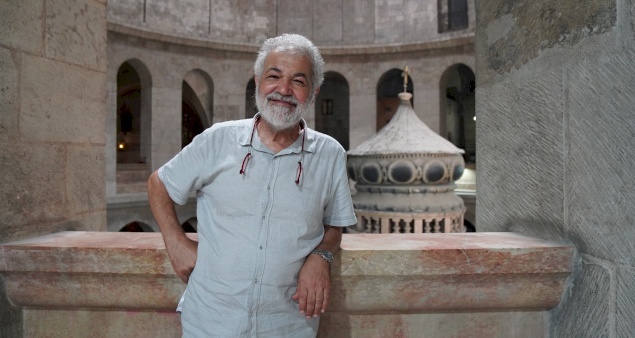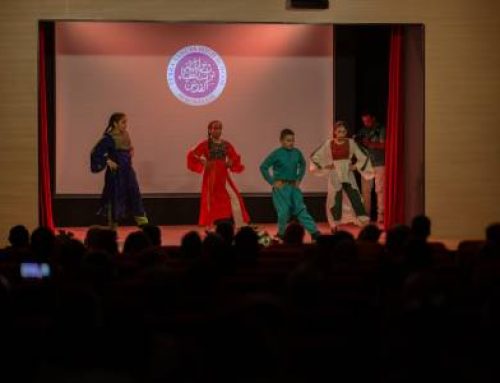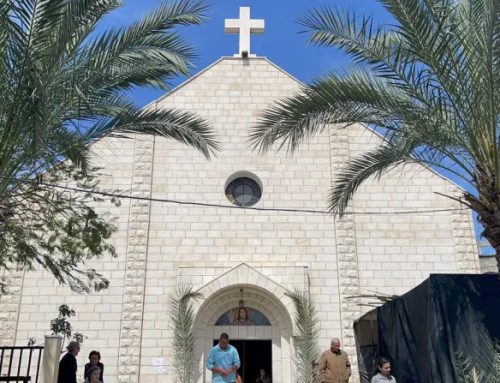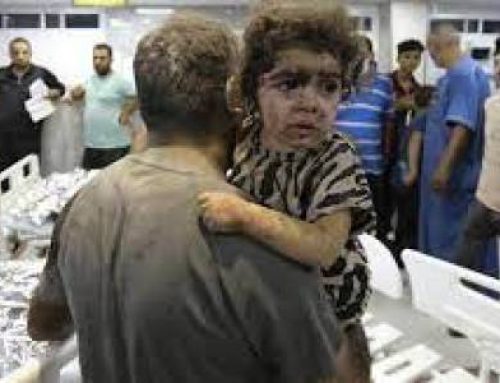JERICHO – Since 2002, the Mosaic Center of Jericho has been, among other things, revitalizing the art of mosaics, a Mediterranean and Palestinian cultural heritage of great significance. Through renovations, conservation works, and original creations, its team, led by Mr. Osama Hamdan, president of the center, has become renowned both in the Holy Land and abroad for their rare expertise in a field still locally too little known. Interview.
- Mr. Hamdan, you’re the president of the Mosaic Center in Jericho and you’re also a renowned conservator who’s renovated a lot of Christian sites and Holy Places. Can you tell us more about your work? What is it that you do exactly?
Mainly, I work in renovating and conservating mosaics with the Mosaic Center of Jericho, which I founded in 2002 with Fr. Michele Piccirillo, OFM, and my colleague Carla Benelli. This center also has a ceramic center in Nisf Jubeil, as well as a kitchen offering traditional food and cooking courses, and an extension of a guest house, whose main structure is located in Sebastia. You can also find another mosaic workshop in Bethlehem. Our work on the cultural heritage of mosaics and ceramics is multiple: conservation, renovation, original creation, awareness campaigns and training courses.
The Mosaic Center in Bethlehem (Star Street)
- What’s your usual work procedure when you work with mosaics (renovation and conservation)?
We have a scientific approach. We always start by documenting and studying the mosaics, to prepare our intervention and decide what approach and what method we’ll use, before presenting our idea to the client. Our goal is to help keep the values, information and message of the cultural heritage we’re working on. Also, we try to make it so that the people who will see this heritage will better understand its meaning and values. We have to conserve the original beauty and richness of the art, all while taking into account the impression that it will give off after we finished working on it.
- Can you describe some finished projects you’ve worked on?
Over the years, our growing expertise in the field allowed us to work on many great Christian sites: Dominus Flevit, Gethsemane, Magdala, St Peter in Gallicantu, the Dormition Abbey… Because we also create our original mosaics, we also had many orders, both abroad (France, Italy, Germany…) and locally. In Nazareth, for instance, we have been responsible of creating some of the mosaic icons of the Virgin Mary that decorate the Basilica of the Annunciation for five years now.
But we do not only work with Christians: we’ve also worked on Muslim sites and synagogues. In this way, our Mosaic Center is a big bridge between the people living here, who, despite their different faith, share many things in common – especially through cultural heritage.
An original creation of the Mosaic Center
- Is that why you became a conservator? To build bridges?
Originally, I was actually an architect. I was able to study in Italy, where, because I loved history, I specialized in conservation. But I didn’t know much about the art of mosaics until I met Fr. Michele [Piccirillo], one of the co-founders of our Mosaic Center. He was an expert in the art of mosaics and Byzantine archeology in the Middle East, and he taught me everything he knew. With him, I was able to work with mosaics in Syria, Jordan, Palestine… He really opened my mind and my eyes to this art. Until his death in 2008, we worked together on many projects, including the creation and expansion of the Mosaic Center in Jericho.
Today, what I do is a genuine source of happiness for me. Because we experience, we create. And we give hope to people, especially the youth. The situation here can be difficult, and sometimes it seems as if there’s no hope. But by offering people the possibility to work at our center, to have a good, respected job, to become a real expert in a field like this, we provide them with hope for a better and brighter future.
Inside the Mosaic Center of Jericho
Also, I believe, as we said earlier, that cultural heritage is a very important tool for dialogue and tolerance. We have Muslim workers, and they are always curious to understand and learn about the sites they are working on. “Who is this, what is he doing, why is he drawn like this?” they keep asking. This is a way to learn about the other, and thus to become more open, more tolerant. Cultural heritage allows us to accept others, to respect them, because it allows us to learn about them and thus to stop being afraid of them. By teaching and showing people different arts from different religions, you break the walls between communities, you create a possible dialogue.
- How did the Mosaic Center in Jericho come to be? What are its objectives?
Everything started with a training project with six young Palestinians. The idea was to teach them about caring for their cultural heritage, especially mosaics, because there aren’t a lot of specialists in the field. So we established a training workshop, to provide them with skills in conservation, especially mosaic conservation.
Today, the center is a non-governmental organization with many activities, employing about 25 people. We target vulnerable populations with training and job opportunities, especially women, and we also employ disabled people. They are specialized in creating new mosaics.
The main goal of our center is simple: to raise awareness about the cultural heritage of this land, not only as a great resource, but also as a benefit to the local population: a benefit that can be cultural, social, and economical. Our project is about the renewal of mosaics, not just as a craft, but as an art.
Osama (left) and his team in Magdala, inside the 1st-century synagogue found in 2009
- Where do you get your inspiration for mosaics?
It depends. Our country was influenced by many different periods: Hellenistic, Roman, Byzantine, Islamic, Crusader, Ottoman… But also, during the 19th century, by many foreign currents; Italian, German, English… Today, our experience allows us to create very good copies of these different styles and techniques. And we find inspiration not only here, but in the whole region of the Middle East.
For new mosaics, we often draw our inspiration from Palestinian artists, or we create our own style. In our schools, art is unfortunately not something that is very developed, so our people are more skilled craftsmen than artists; however, with experience, they manage to interpret in their own way works of art, paintings or drawings, to incorporate them into mosaics, with a personal approach.
Often, however, we have to simplify the works that inspire us, because mosaic is very expensive. To make a small piece, we need 100 tesserae (for a simple model – sometimes, when the tesserae is smaller, we need more). And since we use techniques and tools from the past (everything is made by hand), we have to cut, adjust and trim each piece. It requires time, patience, and means.
- What are mosaics made of?
They’re made of natural-colored stones. But we use glass tesserae and gold sometimes for our icons, such as the ones in Nazareth, because, since it’s chemical material, they offer more possibilities in terms of colors. Stones are less flashy, less colorful. However, they still have a special value to us; after all, they’re the stones of the Holy Land.
- We spoke of finished projects before. Can you tell us about some of your ongoing projects?
Currently, I’m working in the Holy Sepulchre. We also have projects in Ein Karem and in Bethany, where we do renovations, conservations and excavations. In Sebastia, we work on valorization, and we do excavations and renovations there as well. And we are working on renovations atop of Mount Nebo, in Jordan. Soon, we might also start working on some Mameluke buildings in Jerusalem.
Preserving mosaics in Bethany
- Final question: is there any dream you have, as a conservator, for a particular place in the Holy Land or regarding a particular project?
I’m very glad to have been chosen to work in the Holy Sepulchre. It’s a place of great historical, cultural and religious value, and I like it very much. But if I could choose any place to work on… I would also very much like to work on the mosaics of the Dome of the Rock. And to publish something on the mosaics of Hisham’s Palace. That would be a dream come true!
By: Cécile Leca/ lpj.org











